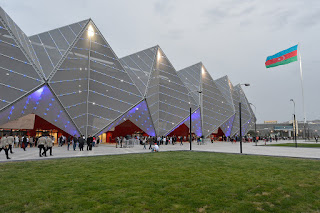6th september 2012
The project is based on the distribution of different areas, for different requirements, in their daily use, causing no interference between them.
Courtesy of Estudio Lavín S.L.
The project is clearly divided into distinct areas, and service spaces. Firstly, recreational and residential spaces, are mainly facing towards the warmer South-West facade, where the outer triangular area provides a platform to enhance the frontal views of the Atlantic Ocean and the island of La Gomera, these distant views aid to relate these areas away from the urban condition of the town; Likewise, the meeting rooms in the upper levels also open onto the cooler façade, which permits distant views towards Mount Teide and allows contact to be made with the main Avenue of the Town. Secondly, the medical Wards, the kitchen area, together with internal services, accesses and facilities, are all located in the cooler sides, made up of a compact facade linking to the main roots of the town, with a more urban character.
Courtesy of Estudio Lavín S.L.
The versatility, balance, and multifunctional nature of all spaces are enhanced by establishing a certain ambiguity between what is considered inside or outside, private or communal, inclusive or exclusive; this facilitates the interaction and social dynamism between the residents themselves, and with external users who are accessing areas during the day.
Courtesy of Estudio Lavín S.L.
The views, together with perspectives are enhanced, be it through access of the corners, or by varying the communication of spaces via mobile partitions, with multi-purpose halls, which unify the spaces according to the requirements of the various activities sought.
The main reception acts as a nexus to control activities shared between residents, those who only use the facilities for purposes of daily meals, and by others benefiting from activities offered throughout the day. This is contemplated by the Multipurpose Dining room, working as a Day Centre area, together with multifunctional rooms and medical wards. Whilst the rooms on the upper floors are geared for longer stays and have more restricted access.
Courtesy of Estudio Lavín S.L.
Colour
Colour plays a main role both for emotional and functional reasons; On the one hand, vibrant colours and shades tend to subtracted weight to the institutional part of the programme, whilst also serving as simple signals leading, and aiding people who in many cases have lost sensory or cognitive capabilities, and are bathed in sunlight as the chromatic element that stimulates and revitalizes the variable spaces.
Courtesy of Estudio Lavín S.L.
Outdoor Spaces
The outdoor spaces are essential to this type of project, enhancing and creating an environment for the human and social contact of residents between themselves, and the necessary visitors that make them lose the sense of enclosure; Moreover, it aids fitness through exercise, the development of cultural activities, or educational tasks in the open air. Plant life is used by way of visual barriers towards the nearby buildings, absorbing the negative image, and consequently opening views towards the island of La Gomera.
Courtesy of Estudio Lavín S.L.
The pyramid skylights of the multi-purpose Dining Room play a dual role. Whilst inwardly they magnify the importance of the space they serve, they are however also converted in static parts of the garden, which in itself makes up the area that is observed from the upper terraces of the rooms.


























